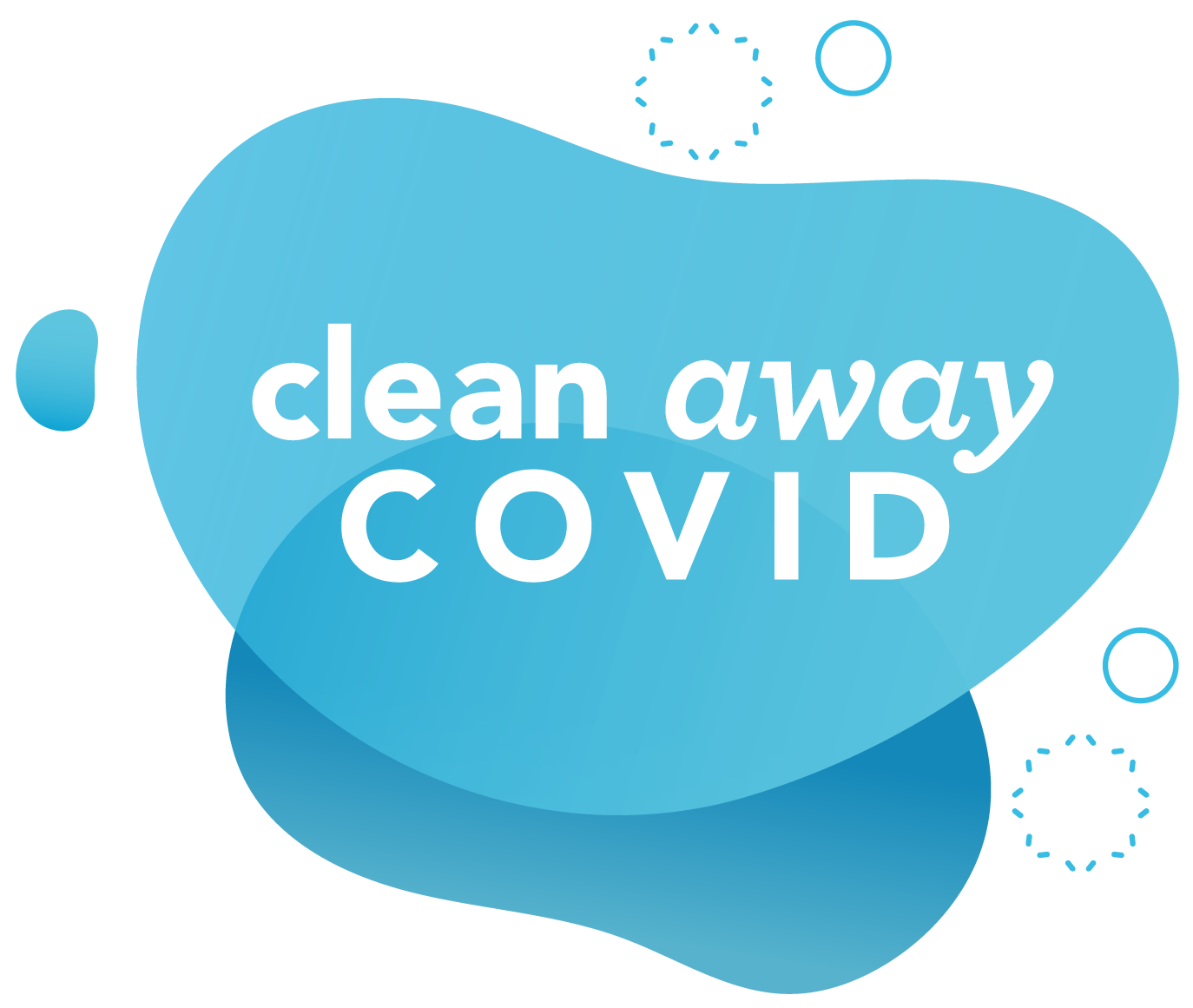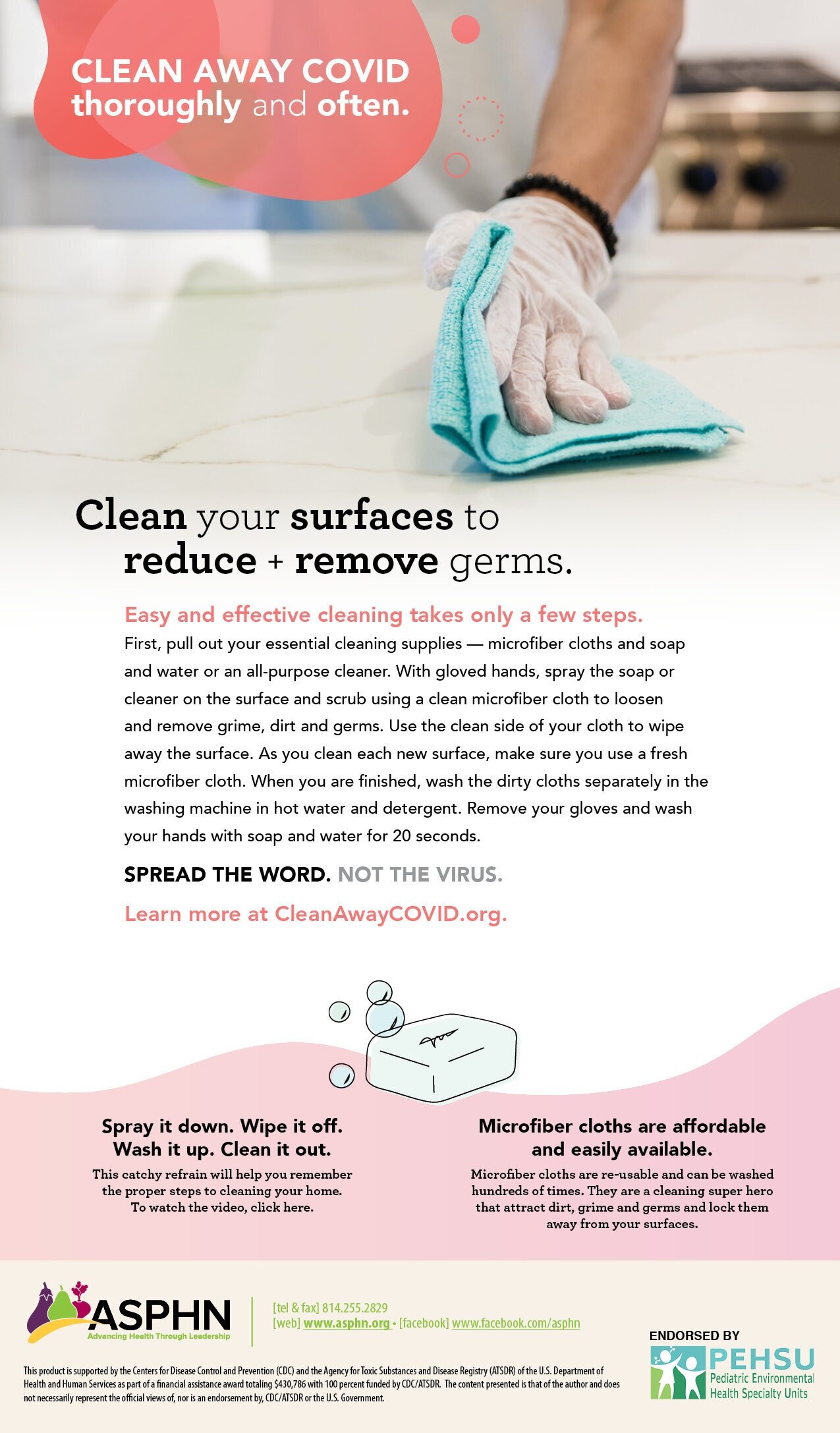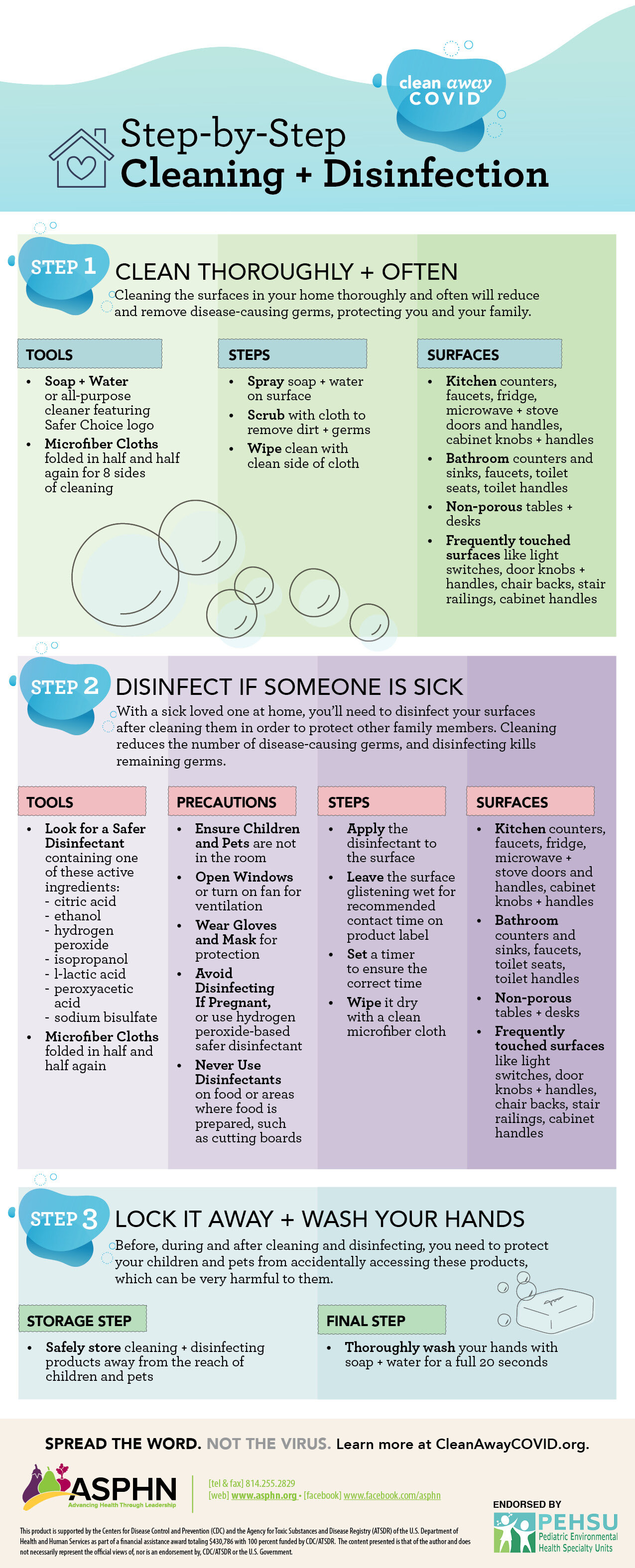Keep your surfaces clean.
We touch dozens of surfaces in our homes over and over throughout the day. Frequently cleaning these surfaces reduces the number of germs in the home and lessens the risk of infection. Watch this quick video to learn more.
Easy and effective cleaning takes only a few steps.
Clean your surfaces to reduce + remove germs.
The trick to keeping your home safe is to clean your surfaces thoroughly and often. This will reduce and remove disease-causing germs from your home. Follow these simple steps to get the job done.
Gather your essential supplies — soap and water or an all-purpose cleaner and your microfiber cloths.
Spray the soap or cleaner on the surface.
Scrub the surface using a clean microfiber cloth to loosen and remove grime, dirt and germs.
Wipe the surface clean with your microfiber cloth.
Repeat the cleaning steps for each surface in your home.
As you clean each new surface, use a clean side of your microfiber cloth or a fresh microfiber cloth.
Not sure which surfaces to clean? Here’s a quick guide:
Kitchen countertops, islands, sinks, faucets, faucet handles, refrigerator doors, microwave doors, stove door handles and controls, and cabinet handles
Bathroom countertops and sinks, faucets and faucet handles, towel racks, toilet paper holders, toilet seats and toilet handles
Non-porous tables and desks where your family members work or study
Frequently-touched surfaces like light switches, door knobs and handles, the backs of chairs, stair railings, and cabinet handles
Wash your microfiber cloths.
When you’ve finished cleaning, wash the dirty microfiber cloths separately in the washing machine with hot water and detergent. Don’t use fabric softener or dryer sheets, which can weaken microfiber’s effectiveness. You can also wash them in a basin or bucket with hot water and detergent. Remove your gloves and wash your hands thoroughly with soap and water for 20 seconds.
Sanitize in the kitchen.
After you clean with soap and water, there are items in your kitchen that may need to be sanitized after they’re used. These include food preparation items such as cutting boards. If you are using a non-wood cutting board, you can sanitize it in the dishwasher.
You can also make a sanitizing paste using simple household ingredients:
2/3 cup baking soda
1/3 cup hydrogen peroxide
Stir the ingredients together in a container until they reach a paste consistency. Spread the paste over the area and let it sit for 30 minutes. Rinse with clean water and allow the surface to air dry.
If you prefer to use a store-bought product, S&S Sanitizer is an EPA-approved sanitizer for use on hard, non-porous food-contact surfaces.

Spread the word. Not the virus.
Use and share these cleaning resources.
It’s important to keep your food preparation surfaces clean and sanitized during COVID-19. This video shows you how using ingredients you probably already have in your home.








